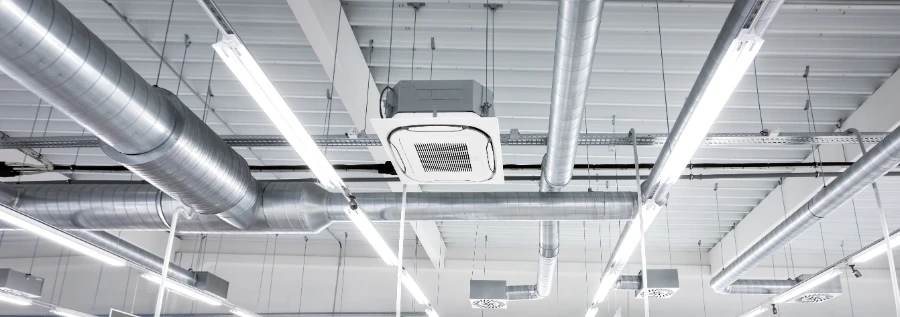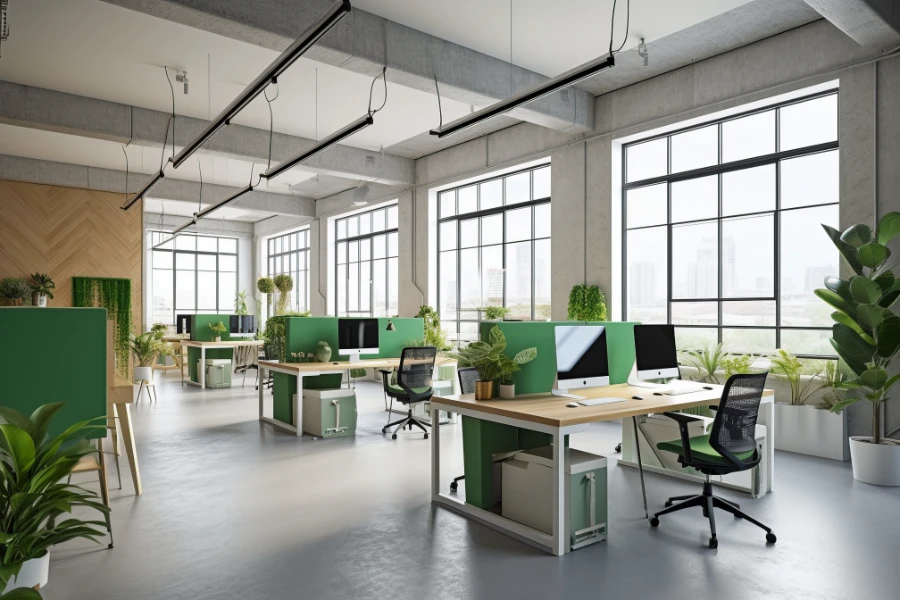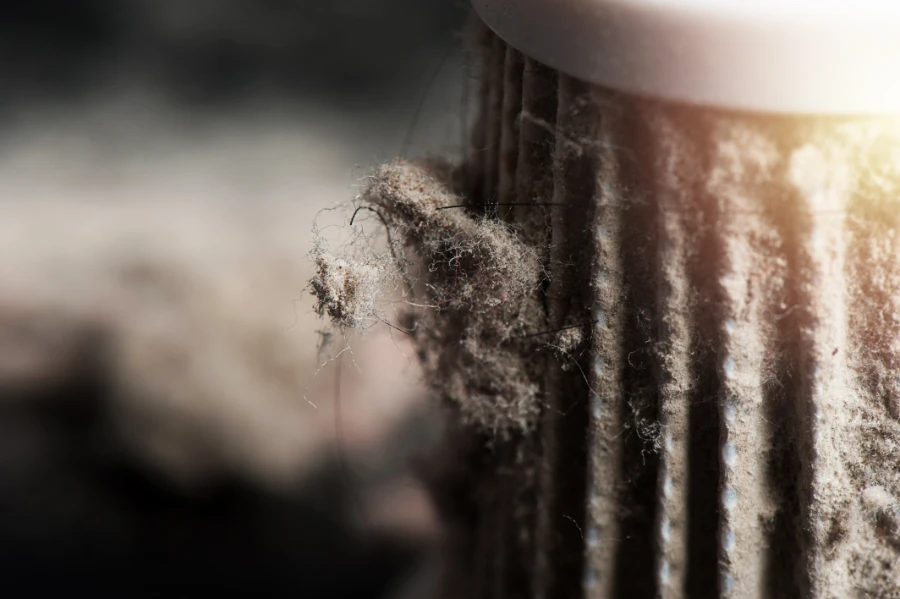Ever walked into a building and instantly felt a wave of stuffiness hit you, leaving you longing for a breath of fresh air? This discomfort is more than just an inconvenience. It’s a common problem faced by millions every day.
Poor ventilation in buildings is a silent threat to health and productivity. From office spaces to homes, the air we breathe indoors is often laden with unseen pollutants that affect everything from our focus to our well-being. Let’s explore how the correct ventilation rate can be a game-changer for indoor environments by transforming them into sanctuaries of fresh, healthy air.
Ventilation in buildings is fundamental to creating a comfortable, healthy, and productive environment. It’s all about the flow of air within indoor spaces.

Good building ventilation ensures that stale, contaminated air is constantly replaced with fresh, outdoor air. This process helps to:
Effective ventilation hinges on balancing air intake and exhaust. In simple terms, it’s about how much fresh air comes in and how much stale air goes out. The goal is to achieve a constant flow of air to prevent the stagnation that can lead to health problems and discomfort.
Windows and vents play a big role here, but the story doesn’t end there.
Ventilation effectiveness is also measured by how well it dilutes and removes indoor pollutants. These pollutants can come from various sources such as:
Effective ventilation works to reduce the concentration of these pollutants, contributing to a healthier indoor environment.
In many modern buildings, natural ventilation (just opening windows) isn’t enough. This is where mechanical ventilation comes in. It uses fans and duct systems to control indoor air quality.
Mechanical systems can ensure consistent airflow, even in buildings where natural ventilation is limited due to design or location.
Determining the correct ventilation rate can be complex. It’s not a one-size-fits-all answer. Factors like building size, usage, and occupancy all play a part.
For example, a busy office building might need a higher ventilation rate compared to a less crowded home.
The American Society of Heating, Refrigerating and Air-Conditioning Engineers (ASHRAE) provides guidelines on this. They recommend ventilation rates based on the building’s purpose and the number of people typically using the space. For instance, ASHRAE suggests that offices should have ventilation rates of about 15-20 cubic feet per minute per person.
Achieving the right ventilation rate isn’t always straightforward. Older buildings, for example, often struggle with inadequate ventilation systems. Similarly, buildings in extreme climates might face challenges in maintaining a comfortable indoor environment without compromising on ventilation quality.
The correct ventilation rate is crucial for maintaining a healthy building. It’s the heartbeat of a building’s air quality system. Without the right ventilation rate, indoor air can become a silent hazard which affects not just comfort but also health.
Picture this: In a poorly ventilated room, contaminants from everyday activities accumulate, leading to issues like headaches, fatigue, and even long-term respiratory problems.
Air quality directly influences building health. When ventilation rates are not optimized, the risk of airborne diseases, allergens, and pollutants increases significantly.
This is particularly true in crowded spaces like schools and offices, where the transmission of viruses and bacteria can be rampant. The right ventilation rate can reduce these risks and promote a healthy building environment.
Consider schools, for instance. Studies show that improved ventilation rates can lead to better student performance and reduced absenteeism. This is because good air quality is closely linked to cognitive function and overall health.
Ventilation is also tied to energy efficiency. An over-ventilated building can lead to excessive energy use, while under-ventilation compromises air quality.
The balance is key. This is where technology steps in. With advancements in HVAC systems, buildings can now achieve optimal ventilation rates without sacrificing energy efficiency.
Comfort is another significant factor influenced by ventilation rates. In a healthy building, occupants feel more comfortable, which translates to higher productivity and satisfaction. Workplaces with proper ventilation have been shown to experience fewer sick days and increased employee engagement. This is because when people breathe healthier air, they tend to feel more energized and focused.

Every building is unique, and so are its ventilation needs. A one-size-fits-all approach doesn’t work. Factors like building size, layout, and the number of occupants all influence what the correct ventilation rate should be.
Tailoring the ventilation system to meet these specific needs is essential for achieving a healthy building environment.
For example, a large shopping center will require a different ventilation strategy than a small, private clinic. Each space has its own set of challenges and requirements that must be addressed to ensure optimal air quality.
Achieving optimal ventilation in buildings is a multifaceted challenge. Overcoming these challenges is key to ensuring that our indoor environments are not only comfortable but also conducive to health and well-being.

One of the biggest hurdles in achieving optimal ventilation is the design of older buildings. Many were constructed without modern ventilation systems in mind. This makes it tough to retrofit them with new technology.
These buildings often rely on natural ventilation, which can be inconsistent and inadequate. Especially in areas with less favorable weather conditions. Upgrading these structures to support healthy buildings can be a complex and costly endeavor, requiring significant modifications to integrate modern HVAC systems effectively.
In the quest for energy efficiency, some buildings are sealed tightly to minimize the loss of heated or cooled air. However, this can inadvertently trap pollutants inside and compromise air quality.
The challenge here is to strike a balance. Ensuring that buildings are energy efficient without sacrificing the quality of the air. Solutions like energy recovery ventilation systems have been developed to tackle this issue, but implementing them universally remains a challenge.
The effectiveness of ventilation systems can vary greatly depending on the climate. Buildings in humid regions face the risk of mold and mildew growth due to excess moisture, while those in dry areas might struggle with insufficient humidity.
Adjusting ventilation strategies to suit different climates is crucial for maintaining healthy buildings. However, this requires a deep understanding of local weather patterns and building dynamics, which can be a complex process.
Indoor pollutants are another significant challenge. Sources such as building materials, furniture, cleaning agents, and even occupants can release harmful substances into the air. Managing these pollutants is critical for ensuring healthy air quality.
However, effectively identifying and controlling these sources can be difficult. Especially in densely populated or heavily used buildings.
Different types of buildings have unique ventilation needs. For example, a hospital requires a more advanced ventilation system compared to a residential building, due to the need to control infection risks.
Customizing ventilation systems to fit the specific requirements of each building type is essential for maintaining healthy buildings. However, developing these tailored solutions requires expertise and often incurs additional costs.
SteriSpace represents a significant leap forward in the technology of air sterilization. Particularly when it comes to ventilating a building. Unlike traditional air purifiers that mainly trap particles, SteriSpace actively destroys contaminants, including viruses, bacteria, and mold spores, by using a unique compressive heating process.
This groundbreaking approach ensures that the air circulating within a building is not just filtered but thoroughly sterilized.
The SteriSpace system operates by drawing in air and subjecting it to high temperatures, effectively inactivating airborne pathogens. This process is incredibly efficient and capable of eliminating more than 99.9999% of biological contaminants.
What sets SteriSpace apart is its ability to handle large volumes of air. This makes it suitable for various settings, from small rooms to large commercial spaces.
In the context of ventilating a building, SteriSpace adds a new dimension to air quality management. Traditional ventilation systems are designed to replace stale indoor air with fresh outdoor air. However, they don’t always address the issue of airborne pathogens.
SteriSpace fills this gap by ensuring that the air brought into a building is free from harmful biological agents, thereby enhancing the overall effectiveness of the ventilation system.
SteriSpace’s versatility allows it to be used in a wide range of environments. From healthcare facilities, where maintaining sterile air is crucial, to educational institutions, offices, and even military installations, the application of SteriSpace technology ensures a safer breathing environment. This adaptability makes it a valuable tool in the pursuit of healthy indoor air across various industries and settings.
SteriSpace technology stands out as a revolutionary solution in the realm of building air quality. Its advanced approach to sterilizing air goes far beyond what traditional ventilation systems and HEPA filters offer. SteriSpace not only enhances the air that circulates within buildings but does so with an efficiency and effectiveness that sets new standards in the industry.
Traditional ventilation systems focus on replacing stale indoor air with fresh outdoor air. While this method is effective in reducing indoor pollutants, it doesn’t necessarily address the presence of microscopic biological contaminants.
HEPA filters, commonly used in many buildings, trap particles as small as 0.3 microns. However, they are not designed to destroy these particles. This leaves a potential risk for pathogen recirculation.
SteriSpace technology, on the other hand, actively destroys over 99.9999% of airborne biological contaminants, including those smaller than 0.3 microns. This is achieved through a process of compressive heating.
This process effectively destroys a wide range of airborne contaminants, including the smallest of pathogens that conventional filters might miss. The technology is capable of handling large volumes of air which makes it suitable for buildings of all sizes.
It’s not just about moving air around like other methods. It’s about ensuring that the air is free from harmful agents to provide a safer and healthier environment for occupants.

One of the standout features of SteriSpace technology is its efficiency. Unlike HEPA filters, which require regular replacement and can incur significant ongoing costs, SteriSpace systems are designed for long-term use with minimal maintenance. This not only leads to cost savings over time but also reduces the environmental impact associated with frequent filter disposal.
Additionally, the energy efficiency of SteriSpace systems is notable. They are engineered to operate effectively without consuming excessive amounts of power.
This is a common challenge with some air purification systems. The energy efficiency translates to further cost savings and a smaller carbon footprint.
Maintenance is a critical factor in any ventilation or air purification system. Traditional systems and HEPA filters often require regular checks and replacements, which can be costly and time-consuming.
SteriSpace technology, in contrast, is built for durability and ease of maintenance. The need for frequent filter replacements is eliminated. This reduces the overall workload for building maintenance teams and ensuring uninterrupted air sterilization.
The ultimate goal of any ventilation solution is to provide clean air for occupants. SteriSpace technology excels in this area by offering a level of air purity that traditional systems struggle to match. By effectively neutralizing a wide range of airborne pathogens and contaminants, SteriSpace creates healthier indoor environments, which is essential for the well-being of building occupants.
In our quest for healthy ventilation in buildings, SteriSpace stands as a beacon of innovation. By compressively heating large-volume air flows, SteriSpace revolutionizes the very concept of air sterilization. Our technology, rigorously tested and proven to eliminate over 99.9999% of airborne contaminants, offers a comprehensive solution for creating healthy air environments.
Ready to transform your space into a haven of purified air? Schedule a meeting with a SteriSpace Sterilization Specialist today and breathe the difference.